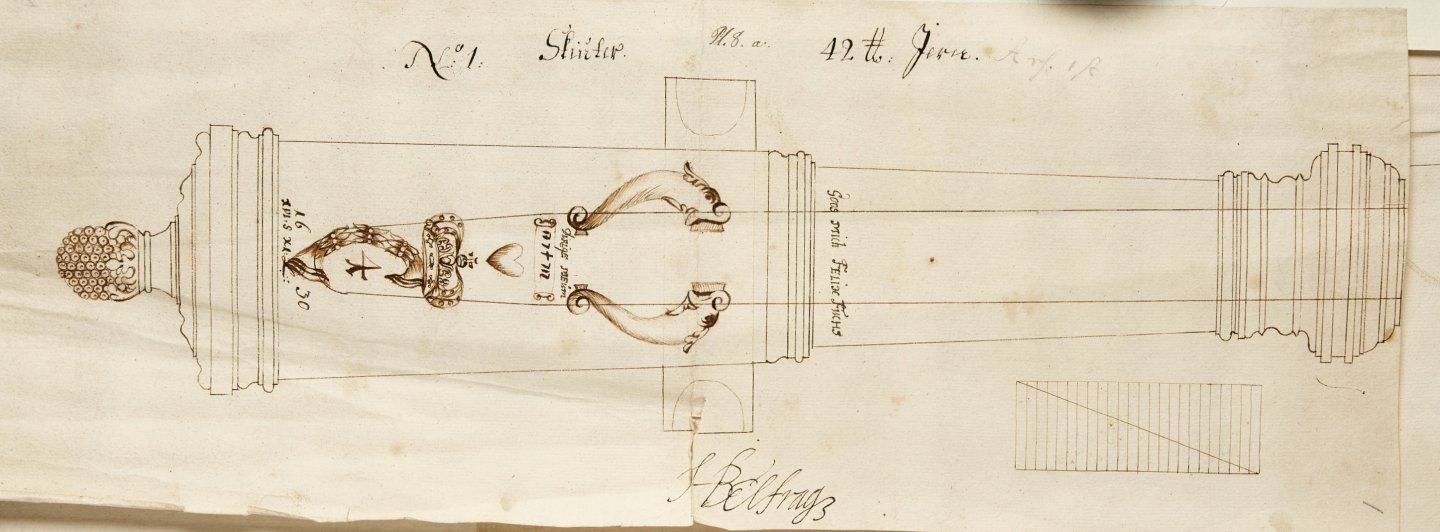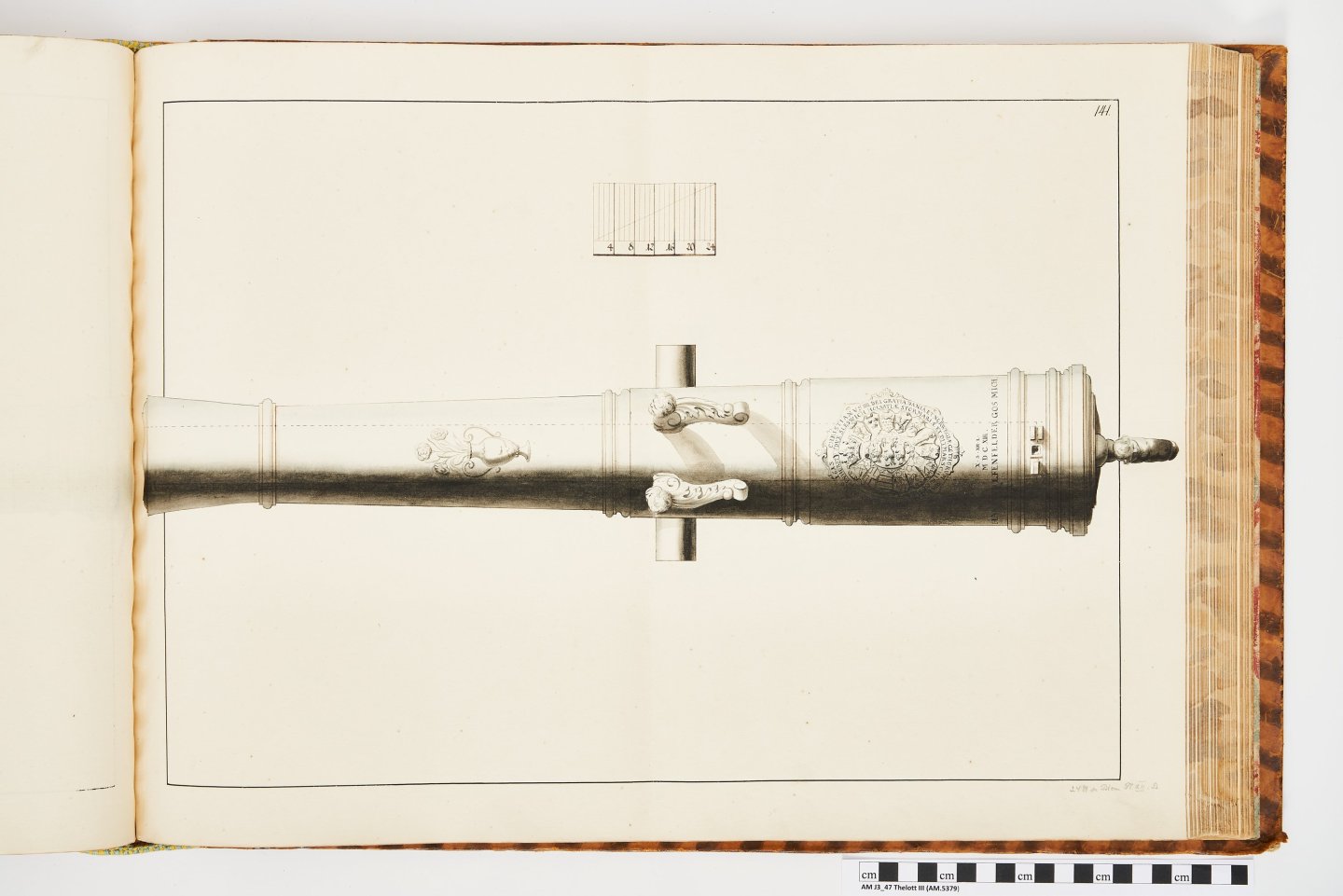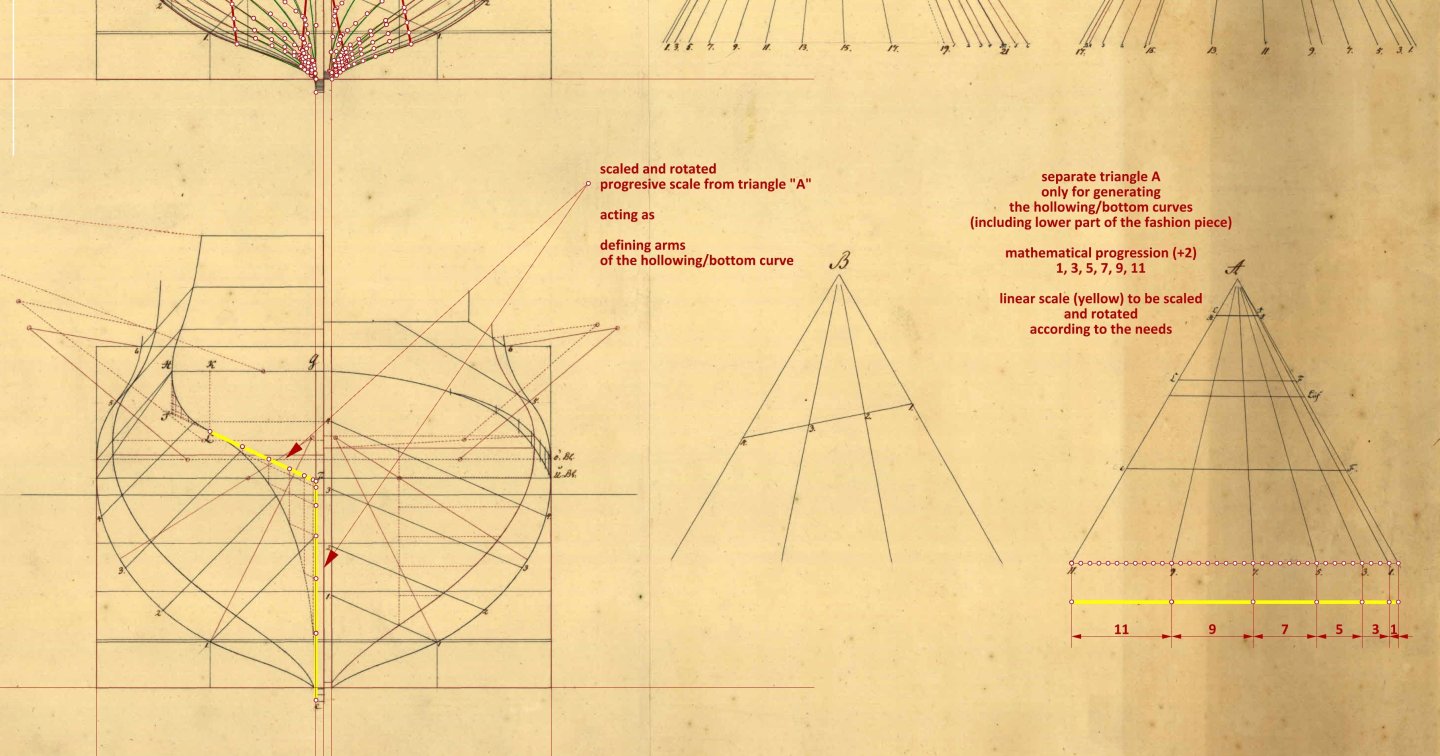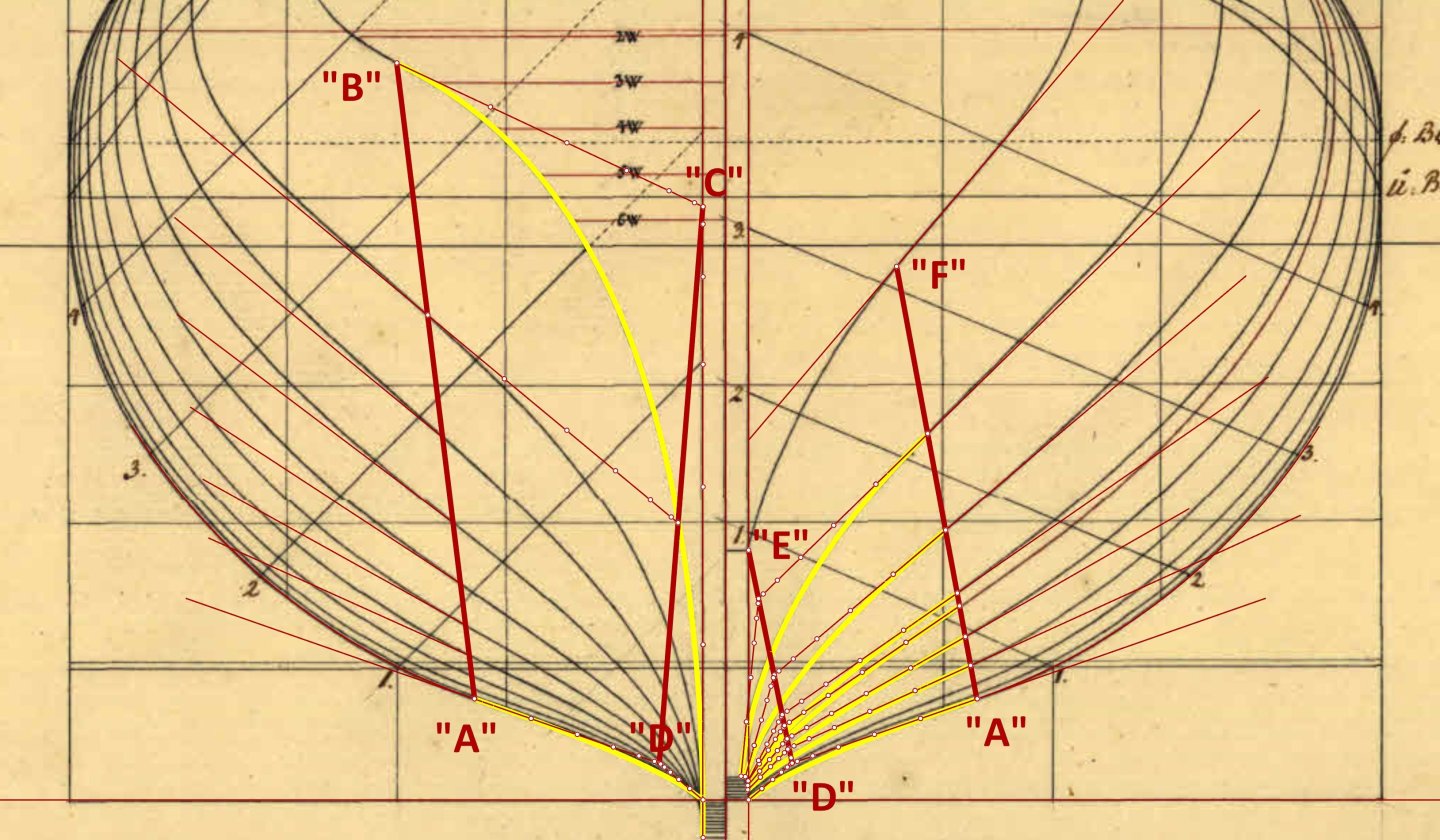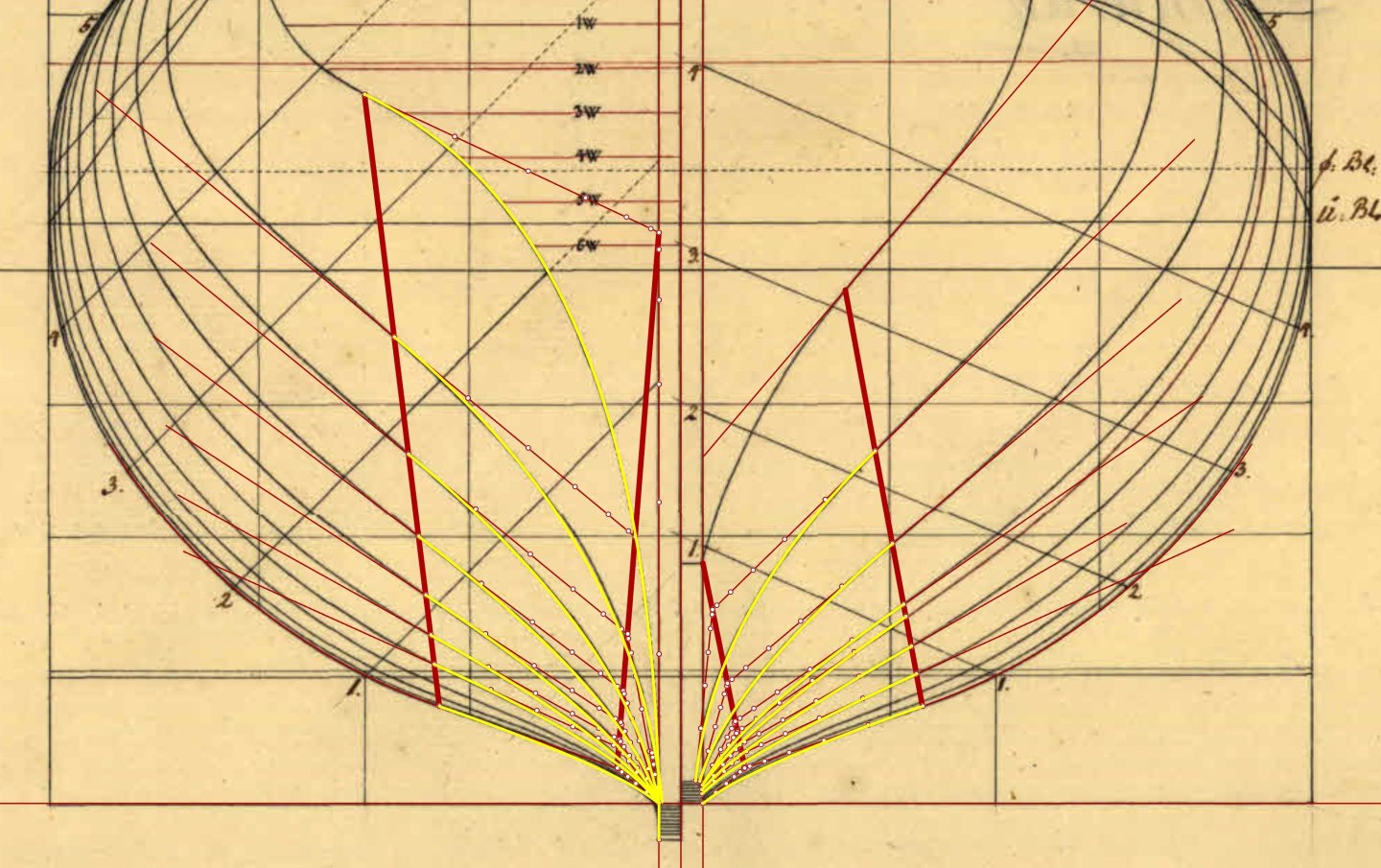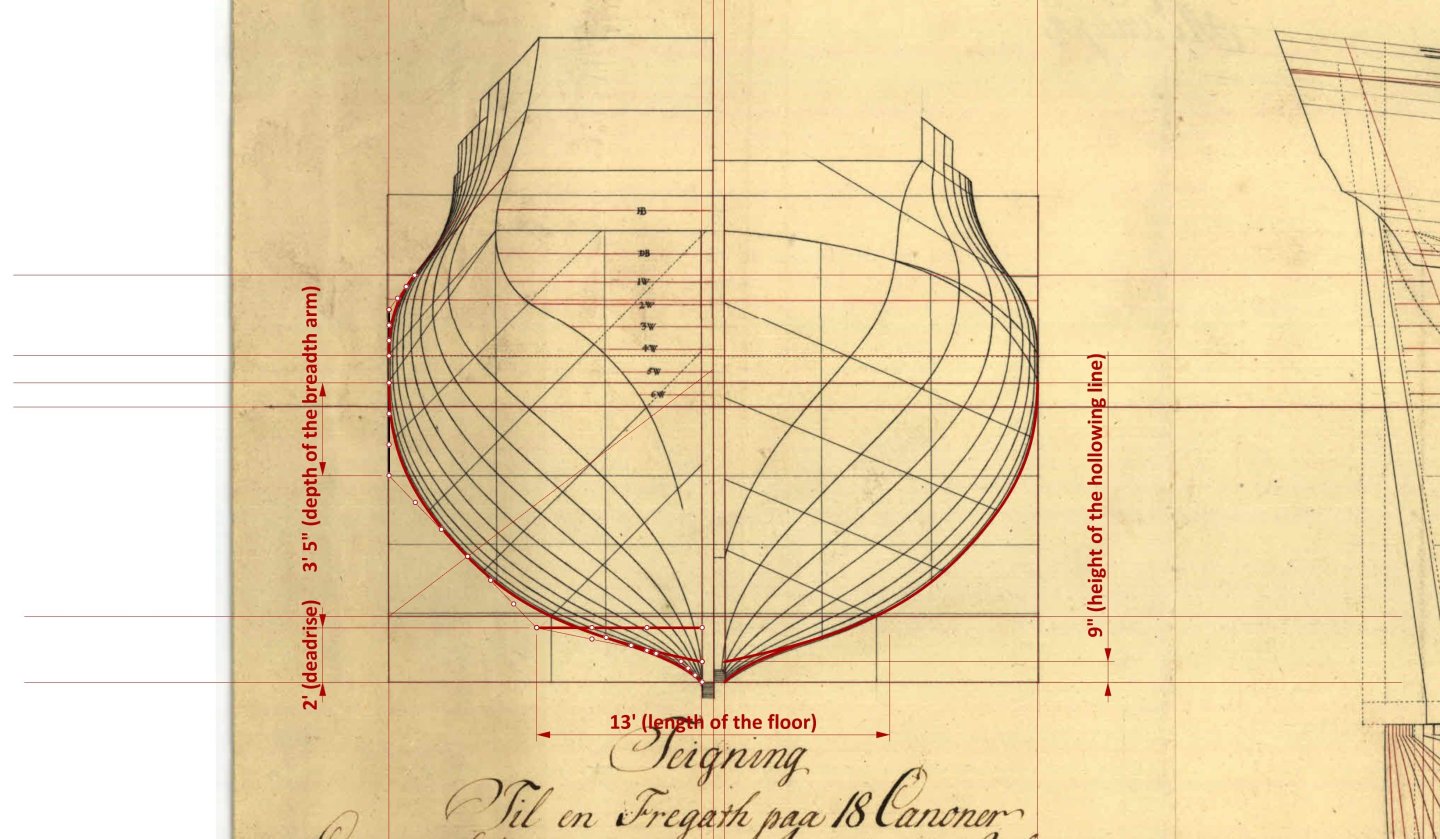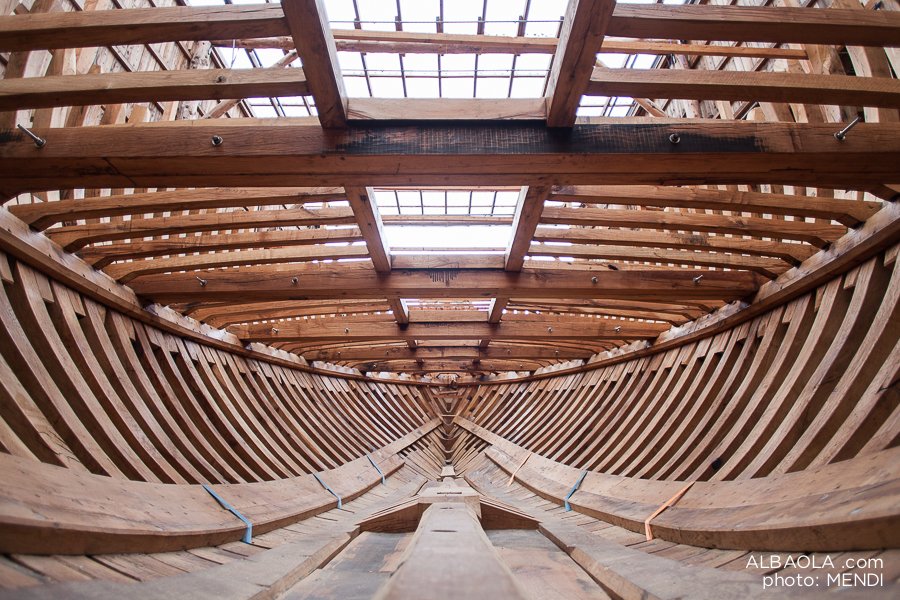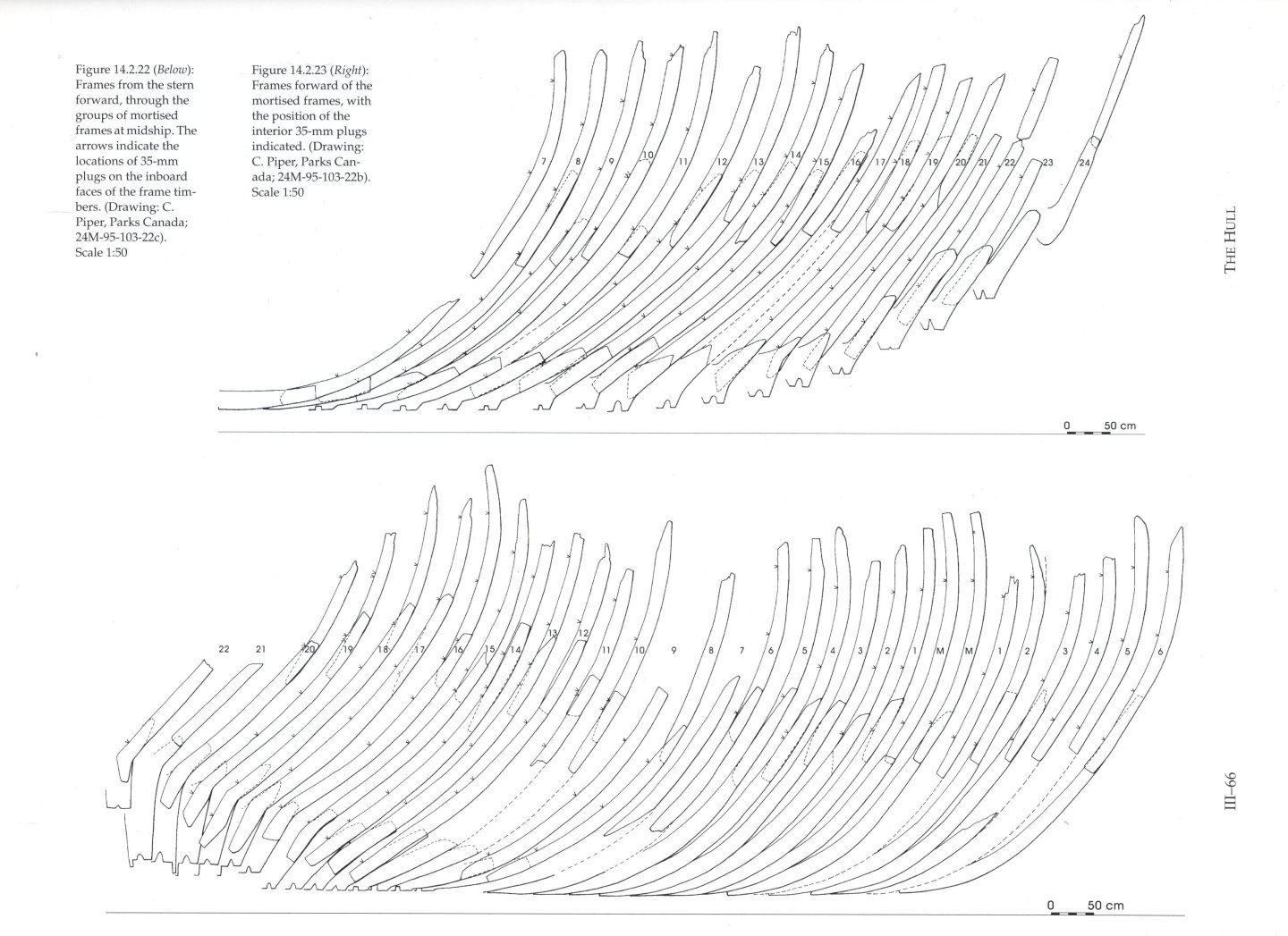-
Posts
977 -
Joined
Content Type
Profiles
Forums
Gallery
Events
Everything posted by Waldemar
-
I also calculated the weight of this barrel for possible verification of its dimensions. Reading the engraved weight markings as ‘XVI S(keppund) : X L(ispund) : [...] Markpund’ gives a result of approximately 2250 kg. Admittedly, this is a fairly typical weight for a legitimate 24-pound cannon, yet this particular specimen, as a ‘drake’, is a relatively light cannon, being short and with thin barrel walls, so the result seems quite reliable. Now, if you make a 3D model of this cannon (or even without it), you can calculate its volume and multiply it by the specific weight of bronze, which for a copper to tin ratio of 10:1 should be, say, between 8.5 and 8.6 g/cm³. This is actually the least reliable component of the calculation, as the actual alloy may have had different proportions and also other components as well. But these calculations are not difficult and are always worth doing in similar reconstructions.
-
Again, Swedish digitaltmuseum, and again I am not able to provide a link for this specific plate, which I did not written anywhere when downloading, sorry. It must come from the Armémuseum resources.
-
@TJM I think I have found a drawing of the Danish 36-pound cannon from the period of Christian IV that you are looking for. It is a chambered cannon, also known as a ‘drake’. Admittedly, the drawing does say 42 pounds, but it is a Swedish made drawing, and in Swedish artillery of that period, calibre was given in skålpund, which was 0.425 kg. When converted to Danish pounds (0.5 kg), this gives a calibre of 36 pounds. As in Thelott's drawings, the „scale” is a just gun's calibre divided into 24 parts, so you will have to find the overall size of the barrel by referencing to the known diameter of the gun's bore.
-
Hi Matthias, In theory, it seems to be a good idea, but I know that in practice, museum staff treat such queries as a nuisance. However, it's not even a great pity, because they are usually only able to answer questions of a standard level of knowledge, so to speak. I wish I were wrong, but I know personally a number of museum employees...
-
Okay, I hope you will sort these issues out one way or another. Maybe I will also benefit somehow when you discover some pattern that will make it easier to recognise the original size of the cannons. Just one thing that makes it somewhat easier is that, unlike the copies downloaded directly from the Armémuseum, the copies available at digitaltmuseum have scales calibrated in centimetres on the scans, so at least the size of the drawings is known.
-
Ah, these supposed scales do not show absolute units of length, but rather a gun's calibre divided into 24 smaller parts, because barrels, and especially their small elements such as the thickness and width of the rings and other decorative elements, were designed and measured proportionally in these submultiples of the calibre. This is precisely the problem with Thelott's drawings, that these ‘scales’ do not facilitate identification at all and even the estimation of size. In these circumstances, it will probably not be helpful that the Swedish foot is 297 mm, divided into 12 inches. ... and Thelott just arbitrarily scaled the drawings to fit the available space on paper.
-
To be on the safe side, I would like to add that many gun barrels have their weights engraved in the Swedish system, which can also be very useful in identifying the size and calibre of these specimens. This is in Roman numerals, skeppund : lispund : markpund, separated by a ‘:’, in proportions of 400 : 20 : 1, or metrically 136 kg : 6.8 kg : 0.34 kg.
-
Oh, I have one request for you, but only if it is not too much trouble. After identifying the Danish specimens in Thelott's drawings, would you please send me a list of them by volume and plate number? I would like to mark them as such in my copies.
-
Good luck!
-
My goodness, I can't find the right link to the Armémuseum archive in Stockholm right now, where one can download all three complete volumes of this collection at once. However, to offer something quickly, here is a link to digitaltmuseum.se, where you can download or view Thelott's drawings individually, plate by plate (it seems that they are all or almost all there, over 450 – mainly Russian, Danish, German, Polish, Lithuanian etc., and perhaps even a few from the times of Teutonic Order ). https://digitaltmuseum.se/search?q=philip thelott&owner=S-AM&o=0&n=50 The descriptions of the individual plates in digitaltmuseum also include library references. The plates are roughly grouped by country, but there is also some chaos, so it is worth looking through the whole collection. To identify the origin of a gun barrel, one need to look primarily at the coats of arms and inscriptions. If you want, I will continue to search for links to download these three albums in bulk. Below is an example of a typical plate, depicting a Danish cannon cast in 1613, i.e. from the period of the reign of Christian IV (or IIII, as it is written on this barrel ).
-
Oh, I almost forgot. A large number of Danish cannons can also be found in Philip Thelott's enormous collection from around 1700, which contains many hundreds of captured cannons from all neighbouring countries. A copy is also available online in the Swedish archives. However, Thelott's collection is not as well organised as Grunth's, in fact there are no descriptions, only drawings, without even calibres or sizes, and everything has to be deduced from the proportions of the cannons, their styling and the inscriptions on them.
-
Perfect! Many thanks again ! The 1860 edition is a wonderful addition, because monochrome mode can also be useful in some applications. And yes, indeed, I saw those few rare reproductions from Grunth's work in Niels Probst's publication on Christian IV's fleet, which I have in my home library, as well as some others from the same series, and still a few others on the Danish fleet. Among Danish authors, Probst is one of the most valuable to me, because he does and shows things that interest me the most, and yet from my favourite period .
-
Many, many thanks for your initiative in scanning this work and sharing the link to the scan. I have been searching for a copy of it for literally decades, without success until now. I was only vaguely familiar with its content thanks to a few reproductions in other publications. Once again, many thanks!
-
.thumb.jpg.c6343966b029e7941df5b987d129aac6.jpg)
Nate's PANDORA in 3D
Waldemar replied to 3DShipWright's topic in CAD and 3D Modelling/Drafting Plans with Software
A pleasure to watch. And, once again, my favourite ‘mono’ colour scheme in muted tones . -
I will start from the beginning, as it may be useful to others as well. To generate hollowing/bottom curves, Turesen constructed a separate progressive scale, specifically using a mathematical progression (in this case +2). Based on this, he built triangle ‘A’ (on the right of the below reproduction), which triangle was particularly useful in manual drawing for quickly scaling this linear scale. Fortunately, in a separate diagram (on the left of the below reproduction), Turesen has also shown how he used this progressive scale to generate the hollowing/bottom curve for the fashion piece. All that is needed is to adjust the progressive scale to both defining arms of the curve by scaling and rotating it appropriately, then, starting from the points on both scales, draw two sets of lines parallel to both arms, and finally connect the points where these lines intersect. And, voilà, the hollowing/bottom curve is ready . In order to maintain geometric consistency and, consequently, to obtain harmonious, smooth shapes, the same procedure and the same progressive scale should be applied to all other frames. In addition, the vertices and terminating ends of both arms of the hollowing/bottom curves for all frames must necessarily lie on a curve with a harmoniously smooth course, preferably on a straight line in the ‘body plan’ projection. — The location of point ‘B’ is the spot where the curve of the fashion piece changes from convex to concave (which may be also said of the start of the hollowing/bottom curves for all other frames), and it is even marked by Turesen himself on his diagram as point ‘L’ (see above). — Point ‘C’ is the apex of both arms defining the hollowing/bottom curve of the fashion piece. — Points ‘A’ and ‘D’ (the latter is the apex of both arms defining the hollowing/bottom curve) were found in such a way that they meet the following conditions: the course of the hollowing/ bottom curve for the master frame is consistent with the course of this curve on the original plan, and, the resulting lines ‘AB’ and ‘DC’ must generate the correct shape (i.e. consistent with the original drawing) of the hollowing/bottom curves for all other frames. Finding these points “A” and ‘D’ is a fairly typical iterative operation based on trial and error fitting. — Point ‘E’ is the spot where the first bend connects to the keel assembly. In a sense, the geometric nature of this point is similar to point ‘C’. — Point ‘F’ is again an empirically found spot where the frame contour switches from convex (or straight) to concave form. As with the aft part of the hull, the resulting lines ‘DE’ and ‘AF’ must meet the conditions described above for lines “AB” and ‘DC’, i.e. they must correctly define the coordinates for the arms of the hollowing/bottom curves of all frames.
-
I think I've found a way to generate hollowing/bottom curves that works for Wildmanden. Take a look at the diagram. The yellow lines are hollowing/bottom curves generated in a geometrically consistent manner, according to the progressive scale for the fashion piece from Turesen's plan. The thick red lines are auxiliary construction lines defining these curves. If you are interested, I will be happy to explain the details that may not be clear from the diagram alone.
-
Yes! Please! I have been waiting a long time for such a wonderful opportunity! I currently have an automatically translated excerpt from a very important work by the Portuguese shipwright Manoel Fernandes from 1616, Livro de Traças de Carpintaria. It is a description of the construction of a warship, which I also intend to work on. Translations of some terms by the automatic translator are more or less understandable, such as ‘bow wheel’ for ‘roda de proa’, meaning ‘stem post’. Besides, I already know many Portuguese terms relating to ship construction from the works I have in my home library. But many remain a difficult puzzle that would take forever to solve. So, if you can, please correct this text (a Word document, bilingual in a two-column table) as much as you can, so as to leave as few incomprehensible passages as possible. Portugal - Warship 1616.docx
-
At this moment, I am able to relatively quickly explain the issue using the sample of an American frigate proposal by Humphreys, since I am working on it just now. However, different design specificity can make it not quite valid for your particular project by Turesen. I need some time to try to resolve this issue using the case of Wildmanden.
-
Yes, and yet in this case, it is the harmonious division of diagonals, as described in French works on naval architecture, and not the parabolic method of shaping frames. I admit openly that in this case I made a mistake in identifying the method, and my only (un)justification is that I unforgivably jumped to conclusions without a complete analysis of the case, as should be done and as I usually remember to do. Sorry. However, the other comments remain valid .
-
Hi Arthur, I wholeheartedly wish you success with this project, but I must honestly warn you that it is a design based on the (double) parabolic variant of the Northern design method (incidentally, the same method was employed by Joshua Humphreys to design the famous American frigates). This, at the time, was a very popular, widely used design method all over the Northern Europe, dating back at least to the last decades of the 17th century, for example for the design of Dutch warships and merchant vessels. The French transport ship La Belle 1684, which sailed to what is today USA territories, and recently excavated by archaeologists in the Gulf of Mexico, was also designed using this method, although the archaeologists failed to recognise this feature and, as a result, wrote nonsense about this particular aspect in their monograph on the ship . And the same can be said about the French monograph by Ancre on this ship. I specifically mention this to make you aware that you will not be able to rely on modern historical, archaeological or other works in this field, and you will have to refer directly to sources from that era in case of need, especially works by Swedish naval constructor Fredrik Henrik af Chapman may be helpful here. Anyway, the design method employed by Turesen means that not a single pixel of the frame contours in this particular design is a straight line or even a regular arc of a circle, whether for the underwater part of the hull or for the upperworks. Well, maybe except for a very short section at the widest point of the hull. To put it bluntly, these circumstances may kill your attempt at reverse engineering of this particular project, especially without your extensive experience to date. But perhaps even more importantly, this plan, which at first glance looks indeed very good and seemingly complete, in reality lacks the most important elements that form the actual basis of the design, namely the line of the floor, the hollowing line and the line of maximum breadth, and you will have a very hard time to recreate them, which is a must. Admittedly, it is possible to find these fundamental design lines, especially on such a precisely drawn plan, but it is a real challenge for me as well. Not to mention such ‘trifles’ as the hull being aligned to the horizontal waterline rather than the horizontal keel. This detail is obviously not already an insurmountable obstacle, but it slows down the work considerably and can easily cause various annoying inaccuracies. And I won't even ask if you already have working CAD software (and which one specifically), which is absolutely essential for such projects, because I'm afraid of the answer . A regular vector graphics software for creating usual illustrations is not suitable. It's not that CAD software replaces knowledge of geometry, because it doesn't, but it offers tools that allow you to use those skills efficiently. If I haven't managed to discourage you with the above , then below, to make your start easier, some absolutely basic and essential data that are so desperately lacking in the dimensional specifications of the ship and on the original plan itself. But this is only the very beginning of a very arduous journey, because these are only the dimensions relating to the master frame... And, by the way, may I ask about your native language?
-
Indeed . On the other hand, however, one can be pleased that they have survived as a species to this day, despite several centuries of relentless slaughter, unlike many other species...
-
At first, I did indeed think that it was the second replica, precisely because of the long time that had passed since construction began. In these circumstances, I referred to photographs from the construction site, where this very aspect looks much better than on the video. And most importantly, it is close to the original. Below are the relevant graphics for comparison. Anyway, I am looking forward to seeing the results of the sailing trials of this replica.
-
Indeed, I wish it were just an optical illusion caused by the black colour of the bottom, which literally devours light. When it comes to assessing the sharpness of shapes, this can of course be considered quite subjective and relative. Relative, because a sharp bow for relatively long hulls may not be sharp enough for very short ships, such as the San Juan. Either way, I would be interested to see the results of sailing tests of the finished replica in this regard. Unfortunately, archaeologists have not made a conceptual reconstruction of this important wreck, or at least they have not published these attempts and their results in a multi-volume archaeological monograph by Parcs Canada. The published lines plan is merely the result of smoothing the hull shapes by synchronising cross-sections, waterlines and possibly other lines of this kind (apart from the construction of a 1:10 scale archaeological model, in which the shapes were faired by eye), but this is not how ships were designed at the time and cannot be considered a conceptual reconstruction, but only an attempt to approximate the original shapes using later methods.
About us
Modelshipworld - Advancing Ship Modeling through Research
SSL Secured
Your security is important for us so this Website is SSL-Secured
NRG Mailing Address
Nautical Research Guild
237 South Lincoln Street
Westmont IL, 60559-1917
Model Ship World ® and the MSW logo are Registered Trademarks, and belong to the Nautical Research Guild (United States Patent and Trademark Office: No. 6,929,264 & No. 6,929,274, registered Dec. 20, 2022)
Helpful Links
About the NRG
If you enjoy building ship models that are historically accurate as well as beautiful, then The Nautical Research Guild (NRG) is just right for you.
The Guild is a non-profit educational organization whose mission is to “Advance Ship Modeling Through Research”. We provide support to our members in their efforts to raise the quality of their model ships.
The Nautical Research Guild has published our world-renowned quarterly magazine, The Nautical Research Journal, since 1955. The pages of the Journal are full of articles by accomplished ship modelers who show you how they create those exquisite details on their models, and by maritime historians who show you the correct details to build. The Journal is available in both print and digital editions. Go to the NRG web site (www.thenrg.org) to download a complimentary digital copy of the Journal. The NRG also publishes plan sets, books and compilations of back issues of the Journal and the former Ships in Scale and Model Ship Builder magazines.



